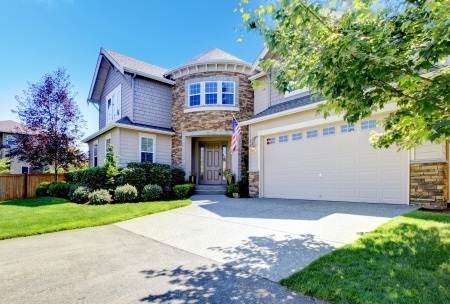Case-Shiller: Home Price Growth Grinds to Lowest Rate in 2 Years
 Home prices rose by 0.40 percent in October according to Case-Shiller’s 20-City Home Price Index and were unchanged from September’s year-over-year reading of 5.50 percent growth.
Home prices rose by 0.40 percent in October according to Case-Shiller’s 20-City Home Price Index and were unchanged from September’s year-over-year reading of 5.50 percent growth.
Slower growth in home prices could help some would-be home buyers enter the market, but rapidly rising mortgage rates have sidelined buyers concerned with affordability and meeting strict mortgage lending requirements.
High Mortgage Rates Stifle Demand for Homes
October’s year-over-year reading for home price growth was the lowest in two years, but home price growth continued to exceed wage increases; builders continued to face labor shortages and higher materials costs. Rising mortgage rates were a major cause of lower demand for homes as the average rate for a 30-year fixed rate mortgage increased from les than 3.50 percent at the beginning of 2017 to a high point of 4.94 percent in September.
Mortgage rates have fallen in recent weeks but remain more than one percent higher than they were two years ago. Recent volatility in financial markets and concerns over general economic conditions also contributed to a lower pace of home price growth.
Las Vegas Leads Cities with Highest Home Price Growth
The top three cities in October’s Case-Shiller 20-City index were Las Vegas, Nevada with year-over-year hone price growth of 12.80 percent; San Francisco, California’s home prices rose by 7.90 percent year-over-year and Phoenix, Arizona home prices rose by 7.70 percent year-over-year.
October’s home price growth rates suggest that West Coast cities such as San Francisco, and Seattle, Washington may be losing their domination over double-digit home price growth rates they’ve enjoyed in recent years. Slower rates of home price growth could indicate that home prices have topped out in costly metro areas.
David M. Blitzer, managing director and chair of S&P Dow Jones Index Committee, echoed analyst’s concerns: “Rising home prices and mortgage rates mean fewer people can afford to buy a house.” The Fed’s recent decision to raise its key interest rate range for the third time in 2018 concerned some economists, but the Fed said that its Federal Open Market Committee predicts that it will raise rates only twice next year based on current and expected economic conditions in 2019.
Banks and credit-card companies typically follow the Fed’s interest rate decisions; this means that rates for consumer lending including mortgages are likely to increase in 2019.

 Case-Shiller’s 20-city home price index for September reported the lowest pace of year-over-year home price growth in almost two years. Lower home prices balanced housing markets between sellers and buyers, but home prices continued to grow approximately two times faster than wage growth.
Case-Shiller’s 20-city home price index for September reported the lowest pace of year-over-year home price growth in almost two years. Lower home prices balanced housing markets between sellers and buyers, but home prices continued to grow approximately two times faster than wage growth. Home prices increased in November, with national home prices up 0.70 percent month-to-month and 6.20 percent higher year-over year. Case-Shiller’s 20-City Home Price Index rose by 0.70 percent in the three-month period ending in November; nationally, home prices grew 6.20 percent year-over-year.
Home prices increased in November, with national home prices up 0.70 percent month-to-month and 6.20 percent higher year-over year. Case-Shiller’s 20-City Home Price Index rose by 0.70 percent in the three-month period ending in November; nationally, home prices grew 6.20 percent year-over-year.